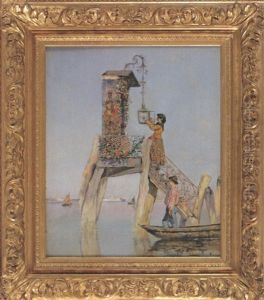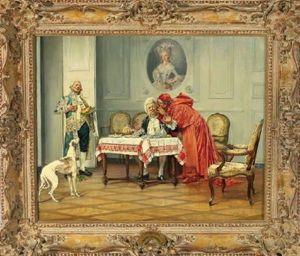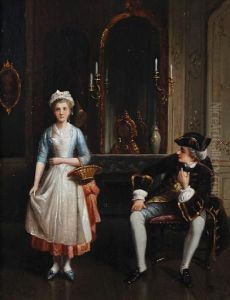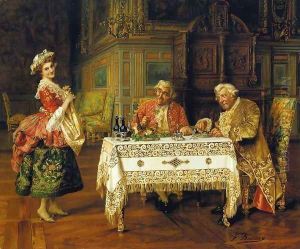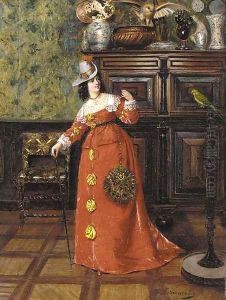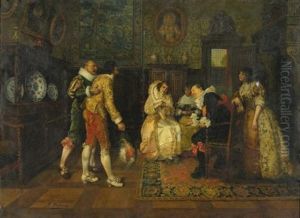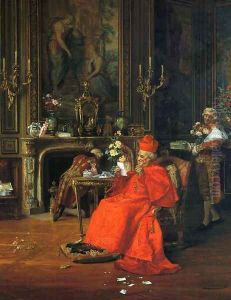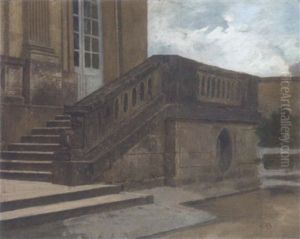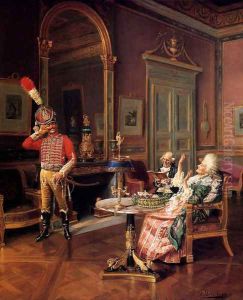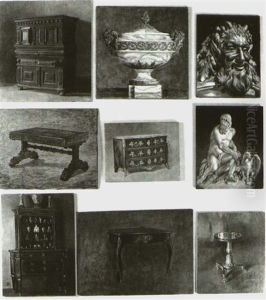Francois Brunery Paintings
François Brunery was a French academic painter born in 1849 in Turin, Italy, although he is often associated with the French artistic tradition. Not much is publicly known about his early life, but he is recognized for his contributions to genre painting, particularly works that depict elegant social scenes, often with a humorous or satirical twist.
Brunery received his artistic training at the Academy of Fine Arts in Turin. He was a student of Jean-Léon Gérôme, a prominent and influential French painter and sculptor, whose style and approach to historical and academic painting greatly influenced Brunery's work. Gérôme was known for his precision and attention to detail, which is evident in Brunery's paintings as well.
After his formal training, Brunery spent a significant amount of his career in France, where he became part of the artistic circles in Paris. He exhibited his works at the Paris Salon, an annual art event that was the official art exhibition of the Académie des Beaux-Arts in Paris. Exhibiting at the Salon was a prestigious achievement for any artist, and Brunery's works were well-received.
Brunery's paintings often feature opulent interiors of the 18th century with figures dressed in luxurious costumes of the period. He was particularly adept at capturing the textures of fabrics and the interplay of light on different surfaces, which added a rich, tactile quality to his works. His genre scenes are typically lighthearted, with subjects engaged in leisurely activities such as romantic encounters, card games, or musical arrangements. Despite the apparent frivolity of his subjects, Brunery's works exhibit a high level of technical skill and a keen observation of social nuances.
Not only was Brunery successful in France, but his works also gained international recognition. His paintings appealed to collectors across Europe and America, contributing to his reputation during the late 19th and early 20th centuries.
François Brunery's death occurred in 1926. Although he is not as widely known today as some of his contemporaries, his paintings can still be found in private collections and occasionally appear at art auctions, where they continue to be appreciated for their elegance, wit, and fine craftsmanship.





















